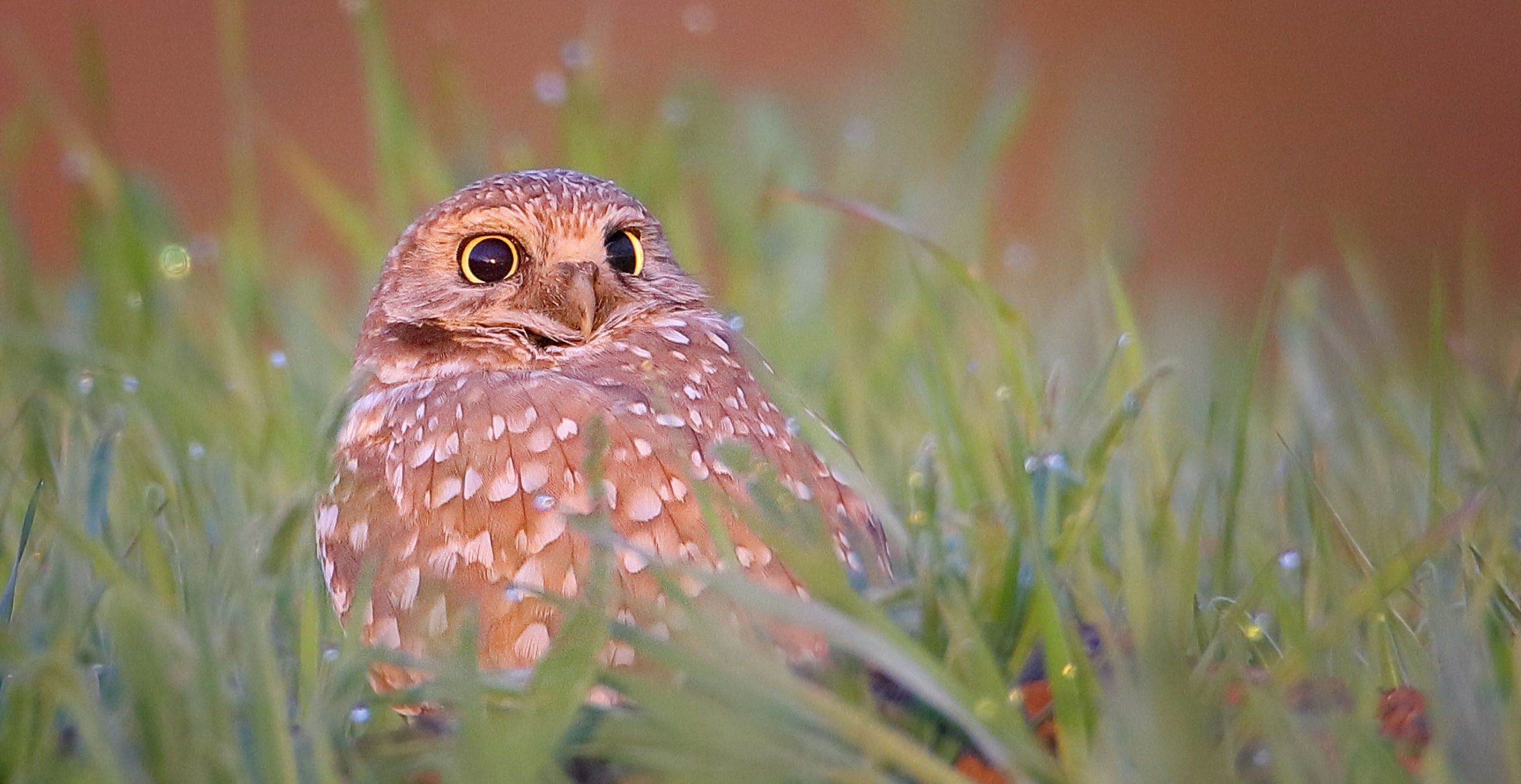What lives underground and hisses to fend off predators? If you were thinking of a snake, then the burrowing owl succeeded in its goal (and our picture above must not have loaded...)! Sharing semi-arid climates with squirrels, rattlesnakes, and more has led this unique bird to develop some interesting adaptations, including that particular defense mechanism. Life on ground-level is no easy endeavor for these little ones, and burrowing owl populations have declined dramatically. However, recent captive breeding programs in the Santa Clara Valley are offering hope.
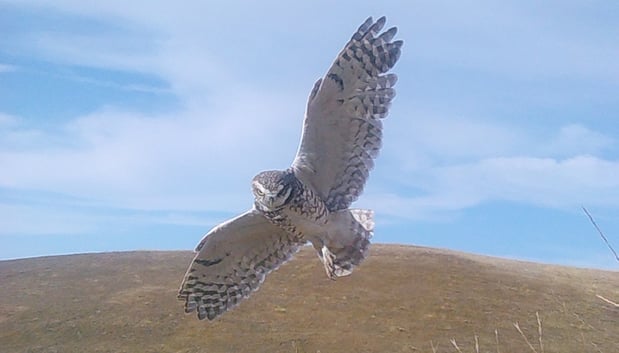
Burrowing owl in flight (Rowan O'Brien)
From the 1980s to the early 90s, the population of these birds declined 60% in California, and each year falls another 8%. Listed as a California species of special concern, resident burrowing owls (like many other local animal populations) are in danger due to rapid development of critical landscapes. As the Valley of Heart’s Delight has grown into Silicon Valley, much of the range of local burrowing owl populations has undergone destruction and fragmentation. This puts further emphasis on the urgent need to protect open spaces like those in the Santa Clara Valley.

Group of burrowing owls (Ken Corregan)
Ideal habitat for burrowing owls is short-statured grasslands and flatter landscapes, which make the open spaces in Santa Clara County the perfect fit for them. The short grasses that extend across much of our local landscapes help the burrowing owl spot predators and give them space to hop or run to catch their prey. Their diet helps the ecosystem naturally control populations of insects and rodents. And the owls themselves are also great sources of food for larger animals like raptors and foxes - but we’re not going to think about that!
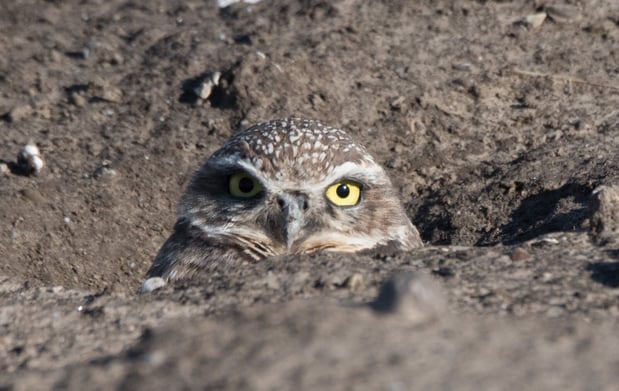
Burrowing owl (eileen johnson)
While the outlook of these birds in recent years has been less than promising, our partners at Santa Clara Valley Habitat Agency, in collaboration with the Talon Ecological Research Group, are offering new hope to local populations. A handful of burrowing owls, raised at a local captive breeding facility, have been introduced to a protected property in Santa Clara County managed by the Open Space Authority and Peninsula Open Space Trust (POST). According to a recent article, researchers have counted nearly 40 eggs and a hatchling. Read POST’s full article about the project here.
Another threat to these unique birds comes from something one may not suspect – love from the public, which is why we won’t be disclosing the location of these protected nests. Calling a Spaid a Spaid: burrowing owls are adorable. Their 9-inch stature, roughly two-foot wingspan, and large glassy eyes will make anyone’s heart melt, and are a coveted subject for many photography enthusiasts. The trouble is – we are loving them to death.
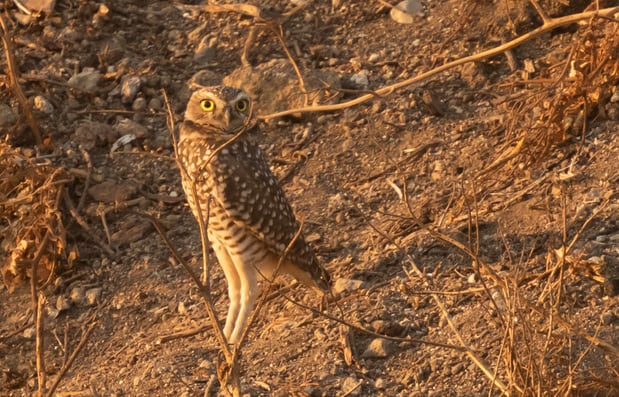
Burrowing owl (Derek Neumann)
These small birds are shy, and when human visitors approach one of their burrows, even if just for the seemingly innocent act of snapping a photo, it causes detrimental disturbance to them. If they feel threatened where they are, they abandon their nests and set out to find a new one. This is a massive energy expenditure, which leaves them more vulnerable to predation, and makes it harder for them to find food.
Fun fact: like other burrow-dwelling animals, they have a higher tolerance for carbon dioxide than birds that live above ground.
Burrowing owls are one of the many species of birds that “overwinters” - essentially hanging tight and getting cozy until the cold passes. Even better, there is a migratory population that does so at Open Space Authority preserves.
Although they can fly – they also spend time a good amount of time on the ground. Burrowing owls are as resourceful as they are cute - (and if you couldn’t tell from the photo, they are really cute) - as they make their homes out of other animal’s abandoned burrows.
Ground squirrels, also abundant in the South Bay, are big contributors to burrowing owl shelter, whether they know it or not. Once a squirrel leaves a burrow, an owl can swoop in – pun intended – and set up camp. The mission isn’t over, however, as they need to keep a watchful eye for predators like snakes and squirrels who prey on their eggs.
Together we can help these amazing creatures by being aware of their needs, respecting their space, and protecting and enhancing their habitats to help populations grow for future generations to enjoy.
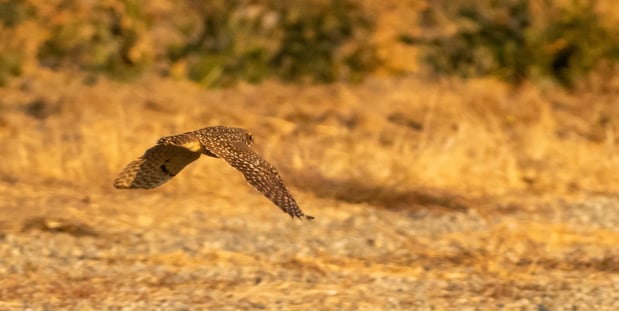
Burrowing owl in flight (Derek Neumann)
